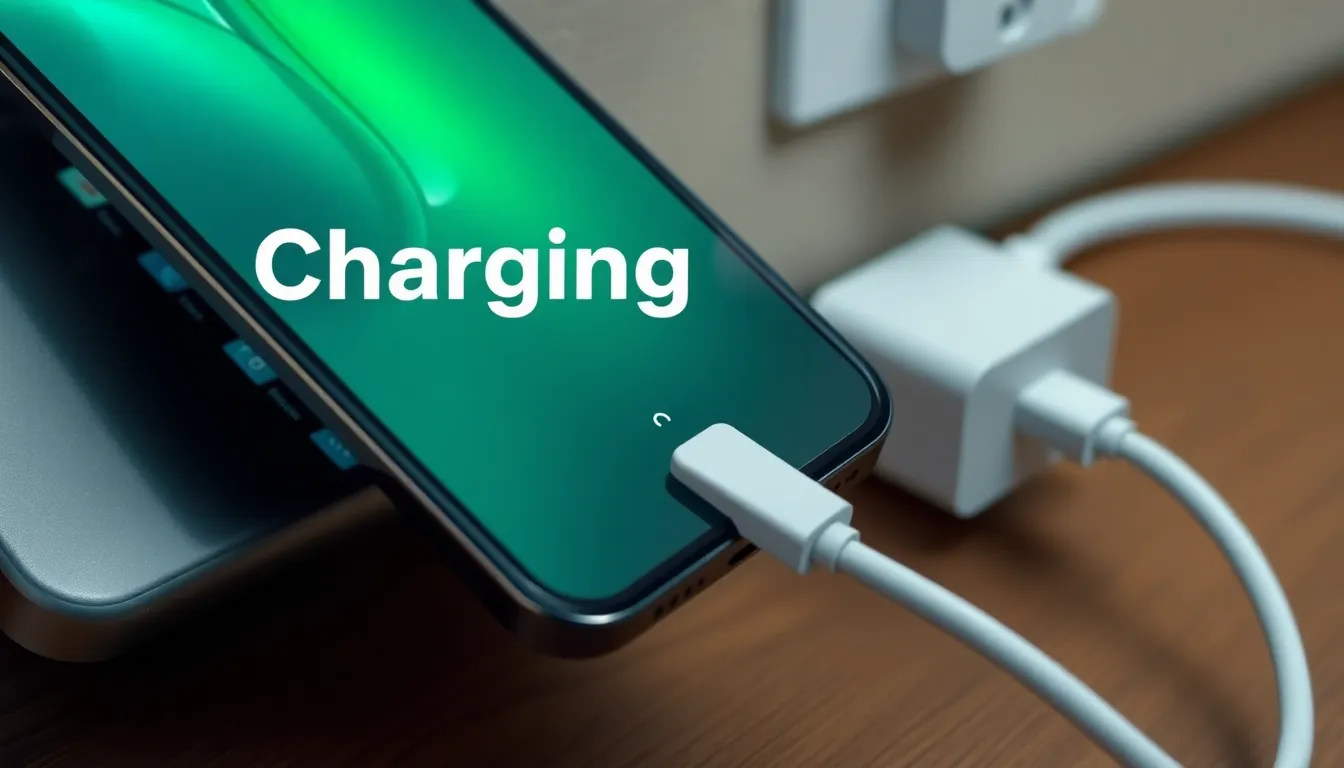Imagine this: you’re running late, your iPhone is gasping for battery life, and your fast charger decides to take a vacation. Just when you need it most, it’s playing hide and seek with your charging port. Frustrating, right?
Table of Contents
ToggleCommon Issues With My Fast Charger Not Working iPhone
Several issues can lead to fast charger malfunctions, causing frustration during critical moments. Understanding these common problems can help resolve the charging situation efficiently.
Loose Connections
Loose connections often disrupt the charging process. An improperly seated charging cable can prevent power from reaching the iPhone. Users should check both ends of the cable to ensure they fit snugly into the charging port and adapter. Inspecting the port on the iPhone for debris or damage can also help. If the cable or adapter feels wobbly, replacing them may improve the connection. Regularly checking for looseness in charging accessories aids in maintaining reliable performance.
Damaged Charging Cable
A damaged charging cable might also cause fast charger issues. Fraying or visible damage to the cable can limit its functionality. Users should inspect cables for wear, especially near the ends where they connect. If the cable doesn’t charge consistently, it may be worn out and need replacement. Sometimes, using a different cable helps determine if the issue lies in the accessory or the phone itself. Ensuring the use of certified cables can prevent compatibility problems and maintain charging efficiency.
Troubleshooting Steps

Identify and resolve charging issues using these steps. Following these methods can restore fast charging functionality.
Check the Power Source
Inspect the power source first. Ensure the wall outlet functions properly by plugging in another device. Examine power strips or extension cords as well. Changing the outlet can sometimes reveal whether the issue lies with the original source. A malfunctioning adapter also impacts charging. Use the original Apple power adapter marked with its wattage rating for best results.
Test with Another Charger
Testing with another charger offers clarity. Connect a different fast charger or cable to the iPhone. Using a certified charger enhances compatibility. If charging starts immediately, the original charger may require replacement. For comprehensive verification, try multiple combinations of cables and plugs. These steps confirm whether the problem originates from the cable, adapter, or the iPhone device itself.
Restart Your iPhone
Restarting the iPhone can solve various issues. Press and hold the side button until the power off slider appears. Slide it to turn off the device completely. Wait for 30 seconds, then hold the side button again until the Apple logo appears. This simple step refreshes the system and may resolve temporary software glitches affecting charging. After rebooting, connect the charger to see if functionality restores.
Possible Hardware Problems
Understanding hardware problems can help identify why the fast charger isn’t working. Several factors could contribute to this issue.
Faulty Charging Port
A faulty charging port presents a common problem for many users. Dirt or debris in the port can obstruct the connection, leading to ineffective charging. Inspecting the charging port for foreign objects is crucial for ensuring proper functionality. A damaged port may also prevent successful connection between the charger and device. Users might notice that their cable doesn’t fit securely, which can indicate a need for repair. If cleaning doesn’t resolve the issue, visiting a certified technician for repairs is advised to restore functionality.
Battery Issues
Battery issues often contribute to charging problems. Age can affect battery performance, as lithium-ion batteries typically have a lifespan of about 500 charge cycles. A battery that no longer holds a charge will diminish the device’s ability to utilize a fast charger. Some you may notice unexpected shutdowns or rapid battery depletion, signaling the need for assessment. Troubleshooting the battery health through settings allows users to gauge its condition. Should the battery display significantly degraded health, replacing it may be necessary to ensure effective charging and overall device performance.
Software Solutions
Software issues can contribute to fast charger malfunctions on an iPhone. Addressing these problems often leads to an effective resolution.
Update iOS
Updating iOS can resolve bugs affecting charging. Users can navigate to Settings, then tap General, followed by Software Update. Regular updates provide enhancements and fix known issues, which may include charging problems. Checking for updates every few weeks ensures the iPhone operates on the latest firmware. Often, these updates contain important improvements to battery management and charging protocols.
Reset Settings
Resetting settings can clear glitches that impact charging. To reset, go to Settings, tap General, then select Transfer or Reset iPhone. Choose Reset All Settings to restore default configurations without erasing data. This action resets network, home screen layout, and privacy settings, potentially resolving the charging issue. Performing a reset might help the device and charger communicate effectively once more.
Dealing with a malfunctioning fast charger can be incredibly frustrating especially when time is of the essence. By understanding the common issues that lead to charging problems users can take proactive steps to troubleshoot and resolve these issues. Whether it’s inspecting cables checking the charging port or ensuring the device’s software is up to date there are effective methods to restore fast charging functionality.
If problems persist despite following these steps it may be time to consider professional assistance. Maintaining the health of both the charger and the iPhone will ensure a smoother charging experience in the future. With a little diligence users can keep their devices powered and ready for whatever lies ahead.






